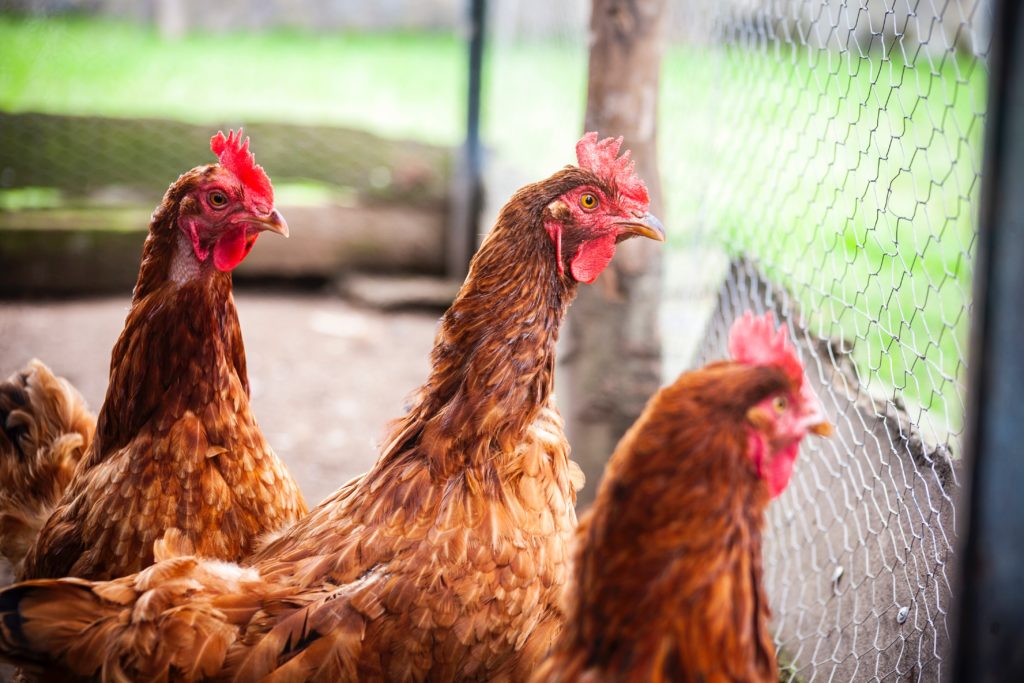All fields are required
Posted in Food Safety,Our Blog,Outbreaks & Recalls,Salmonella on February 26, 2019

CDC has ended its investigation on an ongoing Salmonella chicken outbreak that has affected 32 states and caused 129 illnesses.
In the announcement, CDC also informed that the strain found in the outbreak is widespread in the chicken industry, and so more illnesses are likely to come up. US Department of Agriculture’s Food Safety and Inspection Service (USDA-FSIS) monitored the outbreak.
No common source was identified during the outbreak since it started in January last year and has sickened dozens of people in multiple states. Consumer Reports reported that “[Colin] Basler at the CDC said the decision to end the investigation was prompted by a decrease in the number of new cases being reported.” According to Basler, “…if we saw a spike in new cases, we would certainly reopen the investigation,” but as for the source, “…we have no concrete leads at this time.”
The strain has been identified in various samples of raw chicken products from 76 slaughter/processing establishments, from raw chicken found in pet products and from live chicken. Samples were collected as a part of FSIS routine testing under the Salmonella performance standards. The strain of Salmonella found in the chicken products was closely related to the strain found in the ill people. This made it more clear that people got sick after mishandling raw chicken products. However, the investigation team weren’t able to identify a single supplier, brand or point of purchase which could have led to the outbreak.
Number of cases in different states:
New York (18), Massachusetts (17), Pennsylvania (13), New Jersey (9), Ohio (8), North Carolina (7), Illinois (7), Minnesota (5), Michigan (4), Maryland (4), Connecticut (3), Delaware (3), Missouri (3), Arkansas (2), Florida (2), Georgia (2), Kentucky (2), Louisiana (2), Rhode Island (2), Texas (2), Virginia (2), Washington (2), Alabama (1), California (1), Colorado (1), Hawaii(1), Indiana (1), Maine (1), Nebraska (1), South Carolina (1), Tennessee (1) and Wisconsin (1).
As of February 19, 2019, a total of 129 people have been infected with the outbreak from 32 states. 32 among them have been hospitalized. One death was reported from New York. People started getting sick from January 2018 till January 27, 2019. Ill people were between the ages of less than 1 year to 105, with median age being 42. 69% of those who fell sick were females.
During the investigation, ill people were interviewed about the foods that they ate and the exposures in the week before they fell sick. Out of 69 people who were interviewed, 60 (87%) reported preparing or consuming chicken products that were raw like chicken pieces, ground chicken and whole chicken. All of them reported buying different brands of raw chicken products from multiple sources. There was no single point of contamination. One of the individuals got sick after pets in their home ate raw ground chicken pet food. 2 fell ill as they lived with someone who raises or processes chicken.
CDC conducted antibiotic resistance testing on strain isolated from ill people. The results showed that the Salmonella strain was resistant to multiple antibiotics like ampicillin, ceftriaxone, chloramphenicol, ciprofloxacin, fosfomycin, gentamicin, hygromycin, kanamycin, nalidixic acid, streptomycin, sulfamethoxazole, tetracycline and trimethoprim-sulfamethoxazole; the bacteria showed resistance to either some or all of them.
Most cases of Salmonella infections do not require treatment and patient recovers on their own within 4-7 days. But some people can suffer from complications as a result of an infection. The chances of complications increases for some people like children, elders, pregnant women and those with compromised immune system. In these cases, antibiotics are required to treat the infection.
Around 2 million Americans contract infections caused by antibiotic-resistant strains each year and 23,000 of them die. Antibiotic-resistance poses a great threat to global health and food security. Tackling it has certainly become high priority for scientists worldwide.
Raw or undercooked chicken can infect anyone. Therefore, it’s important that you follow proper food safety guidelines while handling raw chicken. Those who are more vulnerable to food poisoning should maintain extra precautions.
Salmonella is one of the most common causes of food poisoning in the United States. Each year, it sickens more than 1 million people and 450 out of them die. It spreads through contaminated food and water. The incubation period of the bacteria is around 12 to 72 hours. Symptoms include diarrhea, vomiting and stomach cramps. Most people recover within 3 to 5 days. You should contact your doctor if your diarrhea lasts for more than 3 days.
Even though CDC and USDA-FSIS have closed the investigation, they are still in talks with representatives from the chicken industry to reduce the presence of Salmonella infantis in poultry. Since, it is such a problematic strain, the whole food industry and the consumers will benefit if it’s prevalence decreases. The bacteria is widespread in raw chicken and live chicken and therefore, the primary target of CDC and USDA-FSIS is live chicken industry and chicken processing facilities. In the meantime, it is a good idea to continue to assume this is an ongoing problem, and do your due diligence.
By: Pooja Sharma, Contributing Writer (Non-Lawyer)